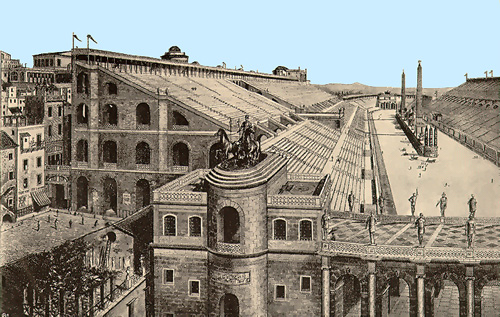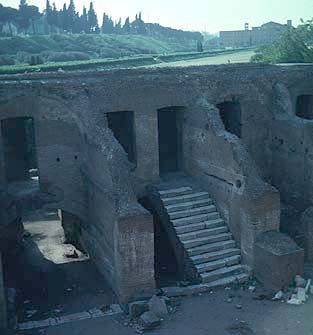

The Latin is cavea. Rows of stone benches three and four tiers high extend around the track; the stands are divided according to social class, with sections of the first tier reserved for priests of the state religion (including the six Vestal Virgins), for Senators, and for wealthy Equestrians. The circus was one of the few entertainment venues in Rome where men and women could sit together; visit the Circus Bookshop to read an amusing poem by Ovid about how an enterprising suitor uses the progression of a chariot race to woo a young woman.

The corridors beneath the stands, punctuated with staircases leading to various blocks of seats, are crowded with shops and filled with milling people—restless spectators, vendors hawking food or cushions for the hard benches, gamblers taking bets, prostitutes looking for customers. The fragmentary foundations and staircase in this photo are all that remain today of the once massive structures of the Circus Maximus.
Barbara F. McManus